

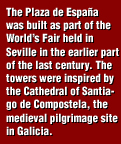
|
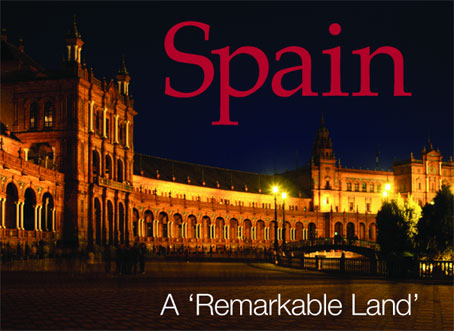
|
|
“We read how great the culture is and how beautiful the land is, but from my experience, no words could ever express Spain’s true beauty. ... Spain is a remarkable land that all should visit,” wrote Theresa Palumbo in her quiz answer describing the difference between learning about Spain in books and being there. Two spring undergraduate courses, Spanish Civilization and Contemporary Spain, surveyed Spanish culture through a cultural excursion to Spain, readings and assignments. Students traveled to Madrid, Seville, Cordoba, Granada and Barcelona for two weeks in January and completed classroom work during the spring semester. Teaching the courses were Assistant Professor of Spanish Laureano Corces, who has taken students to Mexico and Spain for the past four years, and Monica Cantero, an adjunct in modern languages. Eighteen students traveled with Corces and Cantero, visiting major museums and historical sites including the Prado Museum and the Palacio Real (both in Madrid), the Alhambra (in Granada) and the Gothic Quarter and Picasso Museum (in Barcelona). The cultural excursion immersed students in Spanish life through extensive walking tours of the cities with stops at historical sites, meals at local restaurants and performances of flamenco dancing. Students also went to see a contemporary Spanish film. |
|
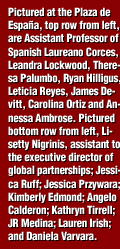
|

|
|
|
Student Leandra Lockwood wrote, “Everywhere I went I was greeted with smiles, and the diversity was overwhelming. This was evident in one clear example. While in Barcelona, we were taking one of the famous ‘walking tours.’ I remember vividly on one street, I saw performers, musicians and artists alongside the traditional Catalan dancing. I was very intrigued by the creative spirit that seems to run wild in Spain. From people my age with funky hair and legwarmers to the older generation [of] painters in front of the church.” During the trip, each student prepared a file with information regarding specific cultural topics. They also were asked to take pictures and notes for their topic files. Corces says, “Hence, Spain became an endless classroom in which readings in the text came to life as students discovered its cultural legacy.” “What makes our course offerings unique is the fact that the study-abroad experience is an integral part of the courses,” he says. Students meet both prior to their visit and when they return to the campus, they have scheduled meetings and complete the course work, which includes a presentation, two quizzes and a final paper. Since many of the cities they visited were university towns, students had ample opportunity to mingle with Spanish students. In Seville, their walking tour included the University of Seville. |
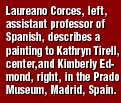
|
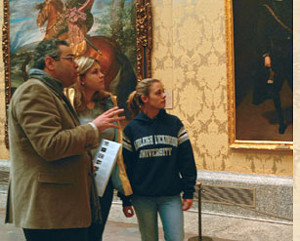
Student James Devitt wrote, “In Sevilla, I was very impressed by how well preserved it was, being from Roman times … going into a mosque or palace that is very old was amazing! Thinking of all the history that had occurred was mind-blowing. … I could have been walking in rooms in which a sultan was murdered. Wow!” For five years, Corces has been supported in these excursions by Patricia Bazán-Figueras, chair of the modern languages and literature department, College at Florham, who helped him establish the program. Offerings in 2000 and 2001 featured trips to Mexico. Students from both New Jersey campuses have made the trips. Corces also credits the Office of Global Partnerships and its executive director, Rick Isquith, for helping to promote study-abroad programs at the University. “They were very helpful with organizational matters regarding the trip.” As for future plans, next January, Spanish Culture and Civilization in Spain will be offered. Under development are two study-abroad options per year — one in Spain and the other in Latin America. “It’s important to have continuity with the programs, so that students know that the possibility of studying abroad exists on an ongoing basis,” says Corces. – C.K.B. |
FDU Magazine Directory | Table of Contents | FDU Home Page | Alumni Home Page | Comments